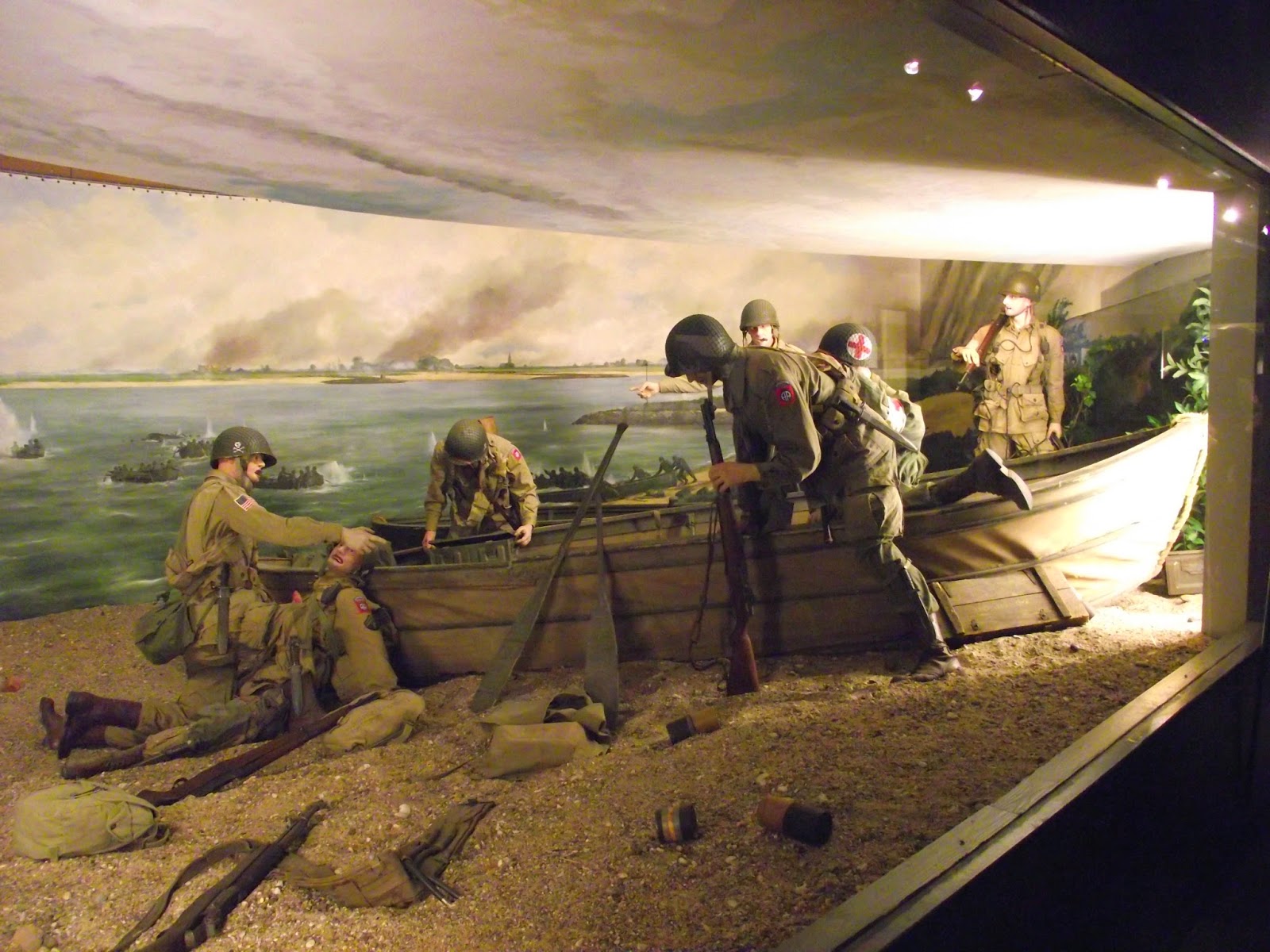April 28,
2014 -- Arnheim
While many of the stops on our river cruise have brought us
to medieval towns with old buildings and lots of charm – think of Brugge –
today’s stop in Arnheim is different.
This is not to say that Arnheim and its environs are insignificant; on
the contrary, this area of the Netherlands played an important role in modern
history.
In the mid-1940s, German troops were occupying every piece
of Western Europe they could reach. When
they reached the Netherlands, they were met with little or no resistance
because the Dutch armed forces were, practically speaking, non-existent. Because the Netherlands had remained neutral
in WWI, the people and government had no experience with war or modern
armaments. The soldiers rode on bicycles
and carried single-shot bolt action rifles.
They were no match for automatic weapons and tanks. The country capitulated quickly to the Nazis. Nonetheless, the country held a pivotal
position in Europe’s geography and became one of most important combat areas of
WWII.
Our tour this morning was to the town of Groesbeek, home of
the National Liberation Museum 1944-1945.
The museum was founded with the mission of preserving the memories of
the war years in the area, especially the period leading up to the liberation
of the country in 1945. The museum
honors not only the history of the place and period, but also the memory of the
thousands of Allied soldiers who died to free Holland from German control.
Perhaps the most important battle, at least psychologically,
was the battle for the Arnheim bridge over the Waal River. One of Britain’s
military leaders, Montgomery, devised a plan to take control of the bridge in
order to weaken the German military; Arnheim and Groesbeek are scant kilometers
from the German border. The other Allied
commanders agreed to Montgomery’s plan which failed primarily because British
forces did not get to their positions on schedule. American and other troops were in place, but
the plan failed and he bridge remained in German hands. The story has been told, with more accuracy
to be sure, in the movie A Bridge Too
Far.
Over the course of almost a year, the Allies attempted to
capture the bridge. They were finally
successful in April, 1945, when troops came from three directions to push
German troops back into Germany.
Canadian forces were instrumental in liberating the area. Today, the National Liberation Museum
attempts to tell the story of WWII as seen through Dutch eyes with a special
emphasis on Operation Market Garden, the assault by the Allies on Arnheim.
 |
| Recreation of jail cell used by Germans to hold Dutch prisoners |
 |
| Artifacts from the war years |
The Museum houses artifacts from the period, including a
baptismal gown made from a parachute and bread made from the same ingredients
and instructions the Dutch received in airdrops. There were recreations of prison cells and
hidden closets where illegal radios were hidden. Dioramas recreated some of the action around
Arnheim and models of drones and their tow-planes gave an idea of how men and
equipment were delivered. In fact, the
Museum sits across the road from a drone landing area.
 |
| Model of drone hanging from ceiling |
 |
| Diorama -- Crossing the Waal |
Our bus groups were each split into smaller groups to be
more manageable in the cramped Museum.
We were passed from docent to docent [all of whom are volunteers], so we
got more than one perspective on the history of Garden Market and its
effects. Several of the docents had been
children when the “invasion” occurred and remembered it vividly. They did not hide their feelings of gratitude
to those responsible for their liberation.
Those who had lived through it spoke of the shortages which they
experienced during the War. Even after
Liberation, there was rationing of some products until 1952 when the final
rationing on tobacco was lifted.
At the end of our sojourn through the Museum, we assembled
in our small groups to see a short film about Operation Market Garden. The film had narration but no other sound
containing, as it did, archival footage from the fighting itself.
 |
| Looking up at the "parachute" |
 |
| The "parachute" Memorial Hall |
After the film, each group was led into an auditorium of
sorts. We had seen this building from
the outside when we arrived and were told it was built to look like a parachute
to symbolize all of the paratroopers who had landed, many of whom died in the
fighting. One of the docents gave a
short talk on the significance of the building and of the lists of names of the
those killed in action during the operation.
As one of the survivors of the era, she told of asking her mother, years
later, what was the happiest time of her life.
She did not share what her expectations were but did tell us she was surprised
when her mother answered, “August, 1945.”
Despite the privations of post-War living, she said, she was free once
again and that was most important to her.
In an irony unknown by most of our fellow passengers, today
is Yom Hashoah, Holocaust Remembrance Day.
The thrusts of Yom Hashoah are “never forget” and “never again.” The National Liberation Museum tells us the
same thing. [For more information, visit www.liberationmuseum.com.]
We returned to the ship just before 1:00 and lunch. Afterwards we read/blogged rather than join
the walking tour of Arnheim. Shame on
us.
Tonight, Tessa gave a sales pitch for future cruises with
Vantage. We were not so interested in
another cruise right now, but the drinks, such as they were, were free. Tomorrow’s port talk was followed by dinner
[cous cous casserole/roast beef] and then more reading and game-playing.
Tomorrow -- Enkuizen

No comments:
Post a Comment